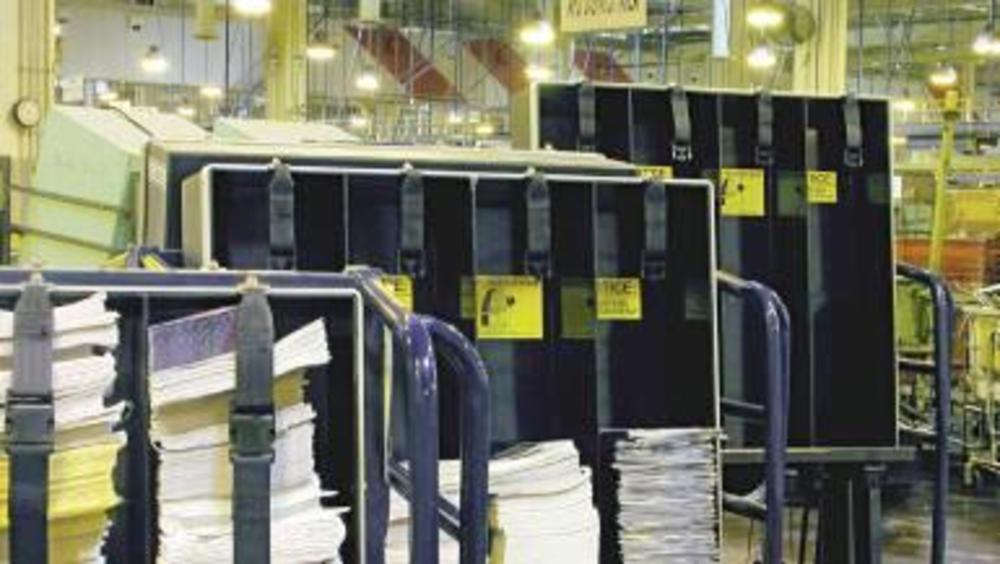Despite efforts by the US Postal Service as well as some direct mail service companies such as Pitney Bowes, news about the Intelligent Mail barcode (IMB) may not be reaching the majority of mailers.
The IMB, developed by the USPS to encode routing and tracking information on mail, will eventually replace Postnet barcodes, which only contain the routing code. Postnet barcodes will be accepted on automation letters and flats until May of 2010, a full year after the standards relating to IMB go into effect; however, the barcode is going to require investment and data cleansing that not every mailer is prepared for.
“The difficulty we have is getting the word out to midsize to small mailers in the country,” admitted Tom Day, SVP of Intelligent Mail and address quality for the USPS, when reached by phone on the day of a Mailers’ Technical Advisory Committee meeting on May 1.
The barcode had been a big topic of discussion at that day’s meeting, Day said. “We’re looking at every possible means to get the information communicated,” Day said. The USPS also has a Web site devoted to information about the barcode, he added.
In addition, Pitney Bowes also launched a resource area on its postal information site, www.pbpostalinfo.com. Pitney Bowes — which refers to the barcode as among the “most significant postal changes in decades” on its site — has also hosted a series of webinars on the topic.
“We’ve had several thousand attendees [for the webinars],” said John Campo, VP of US postal relations for Pitney Bowes. “I would say there’s a thirst for knowledge out there,” he added.
Pamela Lockard, president of direct marketing firm DMN3, said “Of all the clients we have, only the largest mailers know about it right now. The midsize and smaller companies are not aware.”
In preparation for the pending implementation of the barcode, Lockard has been encouraging her customers to clean up their data. If data are not clean by the time the Intelligent Mail barcode is fully implemented, then there will be a real financial impact on businesses if their mail no longer qualifies for automation rates, she said.
In the short term, the Intelligent Mail barcode will be an expense, but in the long run, it will save mailers money and eliminate a lot of the waste that is going on with undeliverable mail. However, despite the barcode’s benefits, Lockard anticipated that “most people are going to wait until they absolutely have to do it.”
Only about one in 10 MCS customers understand the possibilities that the Intelligent Mail barcode can offer them, said Glenn Toole, VP of sales and marketing for MCS Inc., a manufacturer and seller of inkjet printer and other prepress hardware and software products. “It hasn’t been on the radar screen,” he said.
MCS recently released a new version of its camera vision system that can read the IMB. Until this point, MCS’s Perfect Match system could read 2D Datamatrix, OCR, text or other barcodes, but not the Intelligent Mail code, Toole said.
Many people have been asking what the price point will be for a full-service compared to the basic IMB, as well as the Postnet code, according to Day. The USPS understands that there is a level of investment required by mailers and that there needs to be a financial incentive that is necessary to drive them to go with the full-service option, he said.
However, because the USPS is operating under the new Postal Accountability and Enhancement Act, the agency will not be able to legally communicate that price until about February, Day said. “It’s a legal requirement,” he pointed out.
Day said the overall response the agency has received has been “very positive.” In addition to four symposia on the Intelligent Mail barcode held in March in cities across the country, the USPS has also held focus groups at about 80 of its districts across the US in January and February, Day said. The barcode will also be a topic of discussion at the upcoming National Postal Forum this month, he added.
The USPS is also soliciting public comment on its proposed rules related to the use of the barcode on automation mailings of letters and flats. According to the proposed rules, mailers would have a choice between two Intelligent Mail options. With the basic option, mailers would use the Intelligent Mail barcode on letters and flats in place of the Postnet barcode.
The full-service option would require mailers to use unique Intelligent Mail barcodes on mail pieces and to use Intelligent Mail tray and container barcodes. When required, mailers would also have to electronically submit postage statements and mailing documentation before mailings are inducted, among other requirements. Those using the full-service option would receive greater benefits and qualify for lower prices than the basic option, according to the USPS.
These rules, which were published in the Federal Register on April 30, are scheduled to go into effect by May 2009, and comments are due to the USPS by May 30, 2008.








